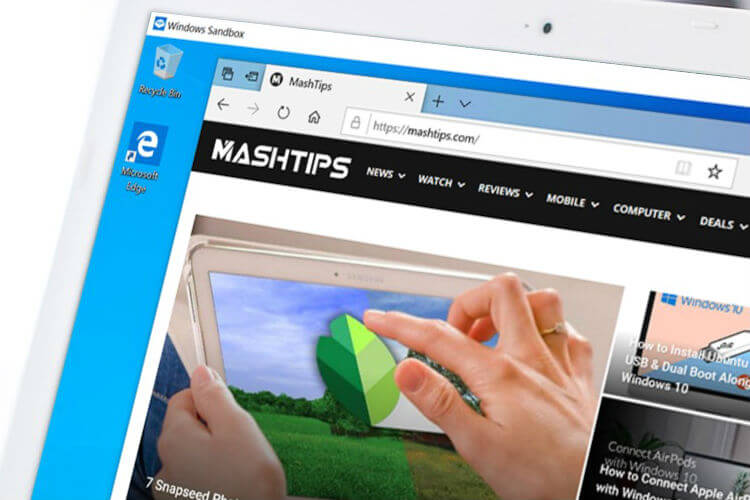
Clipboard redirection: Shares the host clipboard with the sandbox so that text and files can be pasted back and forth.Printer redirection: Shares printers from the host into the sandbox.
 Protected client: Places increased security settings on the RDP session to the sandbox. Video input: Shares the host’s webcam input into the sandbox. Audio input: Shares the host’s microphone input into the sandbox. Logon command: A command that’s executed when Windows Sandbox starts. Note that exposing host directories may allow malicious software to affect the system or steal data. Mapped folders: Share folders from the host with read or write permissions. Networking: Enable or disable network access within the sandbox. If vGPU is disabled, the sandbox will use Windows Advanced Rasterization Platform (WARP). vGPU (virtualized GPU): Enable or disable the virtualized GPU. The configuration file is formatted as XML.Ī configuration file enables the user to control the following aspects of Windows Sandbox: Windows Sandbox supports simple configuration file which enables us to customize minimal set of parameters. How to configure Windows Sandbox using configuration file? Restart the computer if you’re prompted.Ĭheck here for detailed step by step installation from the official docs. Use the search bar on the task bar and type Turn Windows Features on and off to access the Windows Optional Features tool. Virtualization should be enabled on the machine from the BIOS. First of all the machine should be using Windows 10 Pro or Enterprise, build version 18305 or later. This is ideal when trying to analyze some programs in isolation. Software installed inside the Windows Sandbox environment remains “sandboxed” and runs separately from the base machine.
Protected client: Places increased security settings on the RDP session to the sandbox. Video input: Shares the host’s webcam input into the sandbox. Audio input: Shares the host’s microphone input into the sandbox. Logon command: A command that’s executed when Windows Sandbox starts. Note that exposing host directories may allow malicious software to affect the system or steal data. Mapped folders: Share folders from the host with read or write permissions. Networking: Enable or disable network access within the sandbox. If vGPU is disabled, the sandbox will use Windows Advanced Rasterization Platform (WARP). vGPU (virtualized GPU): Enable or disable the virtualized GPU. The configuration file is formatted as XML.Ī configuration file enables the user to control the following aspects of Windows Sandbox: Windows Sandbox supports simple configuration file which enables us to customize minimal set of parameters. How to configure Windows Sandbox using configuration file? Restart the computer if you’re prompted.Ĭheck here for detailed step by step installation from the official docs. Use the search bar on the task bar and type Turn Windows Features on and off to access the Windows Optional Features tool. Virtualization should be enabled on the machine from the BIOS. First of all the machine should be using Windows 10 Pro or Enterprise, build version 18305 or later. This is ideal when trying to analyze some programs in isolation. Software installed inside the Windows Sandbox environment remains “sandboxed” and runs separately from the base machine. 
This virtual machine is using the same OS image as the host machine. Technically Windows Sandbox is a lightweight virtual machine created on demand which a user can safely run applications in isolation. ScoopBox - Windows Sandbox Helper What is Windows Sandbox?






 0 kommentar(er)
0 kommentar(er)
